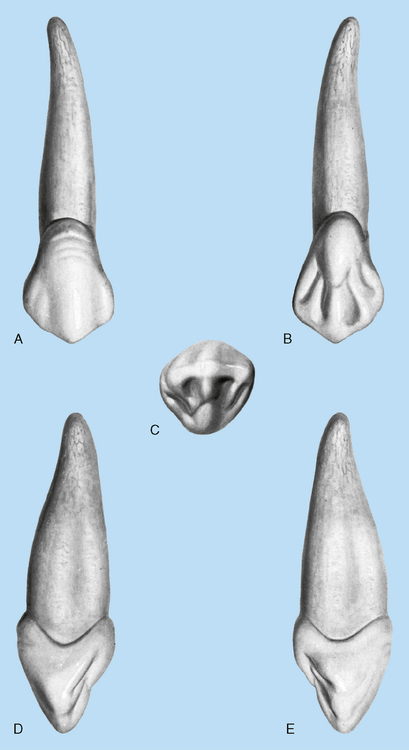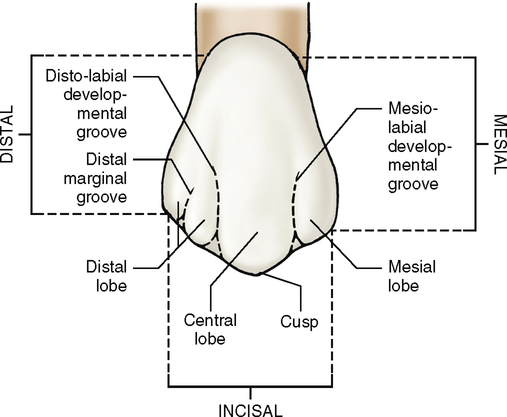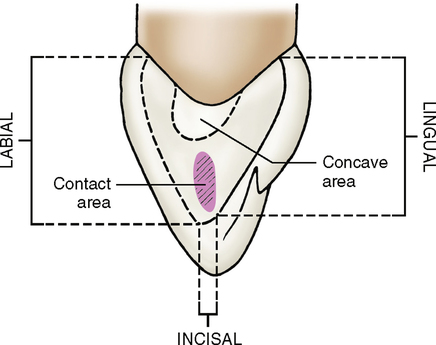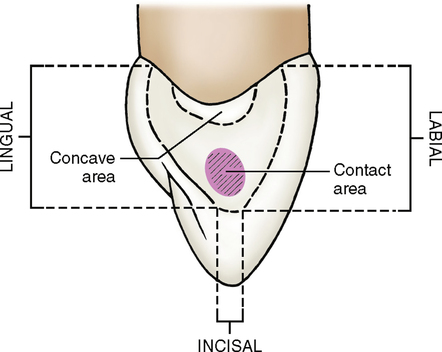Canines
• To understand the function of a canine tooth in relation to its shape
• To understand the calcification and root completion schedules in relation to the eruption dates of the canines
• To recognize the resemblance of the canines to the other anterior teeth
• To understand how the canines are different from the other anterior teeth and how they are similar to some posterior teeth
• To recognize and identify the anatomic structure and landmarks of the canine teeth
• To compare maxillary and mandibular canines and identify each
MAXILLARY AND MANDIBULAR PERMANENT CANINES
Maxillary Canines
Evidence of calcification: 4 months
Enamel completed: 6 to 7 years
Root completed: 13 to 15 years
A maxillary canine (Fig. 13-1) resembles an incisor in its composition of four developmental lobes—three facial and one lingual. The three facial lobes resemble the facial lobes of the incisors except that the middle facial lobe extends farther incisally when the tooth is viewed from the labial or lingual aspect. This middle lobe extension results in the formation of a single cusp. The cusp tip is formed by the junction of four ridges. One of the ridges extends along the middle lobe of the tooth on its most facial part; another extends along the lingual part. The other two ridges run from the mesioincisal and distoincisal corners. All four ridges converge to form the cusp tip.

Mesial aspect
The functional form of a maxillary canine is evident on the mesial view (Fig. 13-4; see Fig. 13-1, D). The wedge-shaped outline of the crown shows the canine to have greater labiolingual bulk than any other anterior tooth. The greatest measurement labiolingually is at the cervical third. This is because of the huge cingulum of the lingual side and the more convex labial outline of the canine. The entire labial surface is more convex from the cervical line to the cusp tip than any other maxillary anterior tooth. The cervical line curves toward the cusp an average of 2.5 mm.
Distal aspect
The distal aspect (Fig. 13-5; see also Fig. 13-1, E) of a maxillary canine shows the same form and outline as the mesial view does. However, the cervical line shows less curvature toward the cusp tip. The distal marginal ridge is more developed and heavier in outline than the mesial marginal ridge. Although both the mesial and the distal surfaces show a slightly flat or concave area above the contact area, the distal surface displays much more concavity. The root surface on the distal aspect may show a more pronounced developmental depression than that on the mesial aspect.
Stay updated, free dental videos. Join our Telegram channel

VIDEdental - Online dental courses






